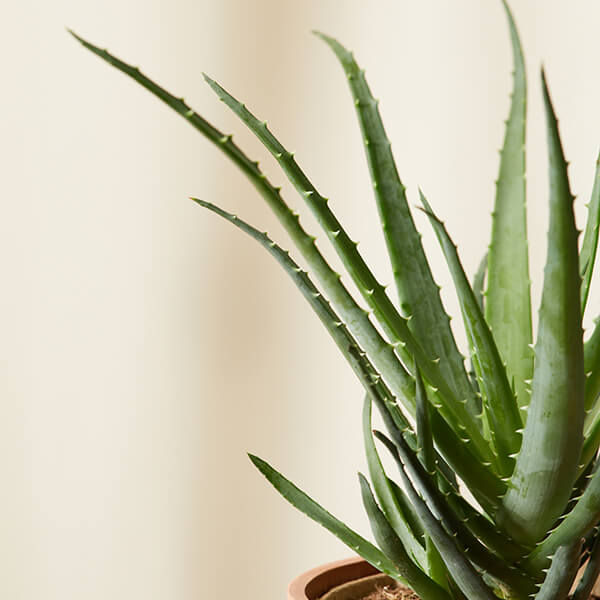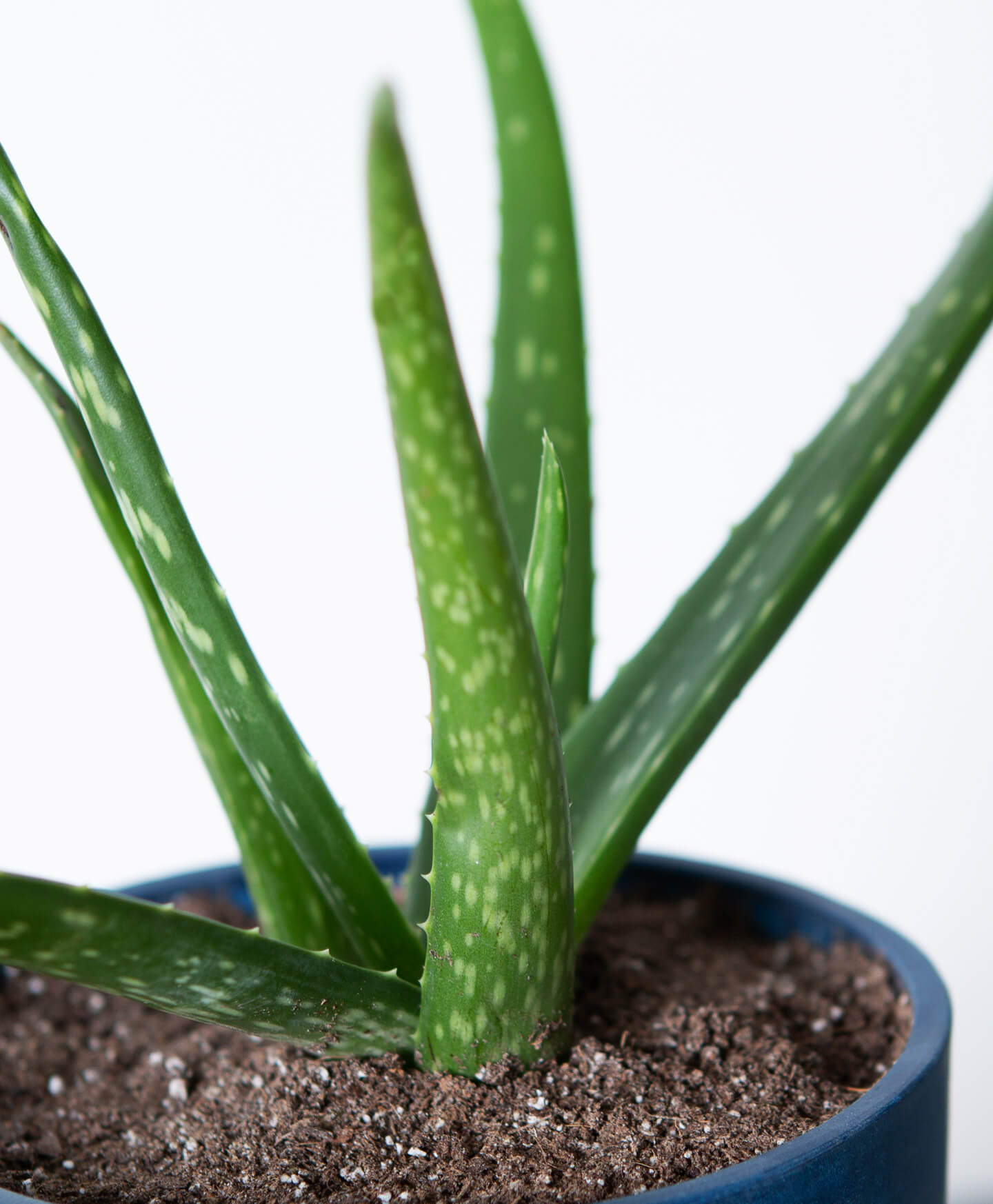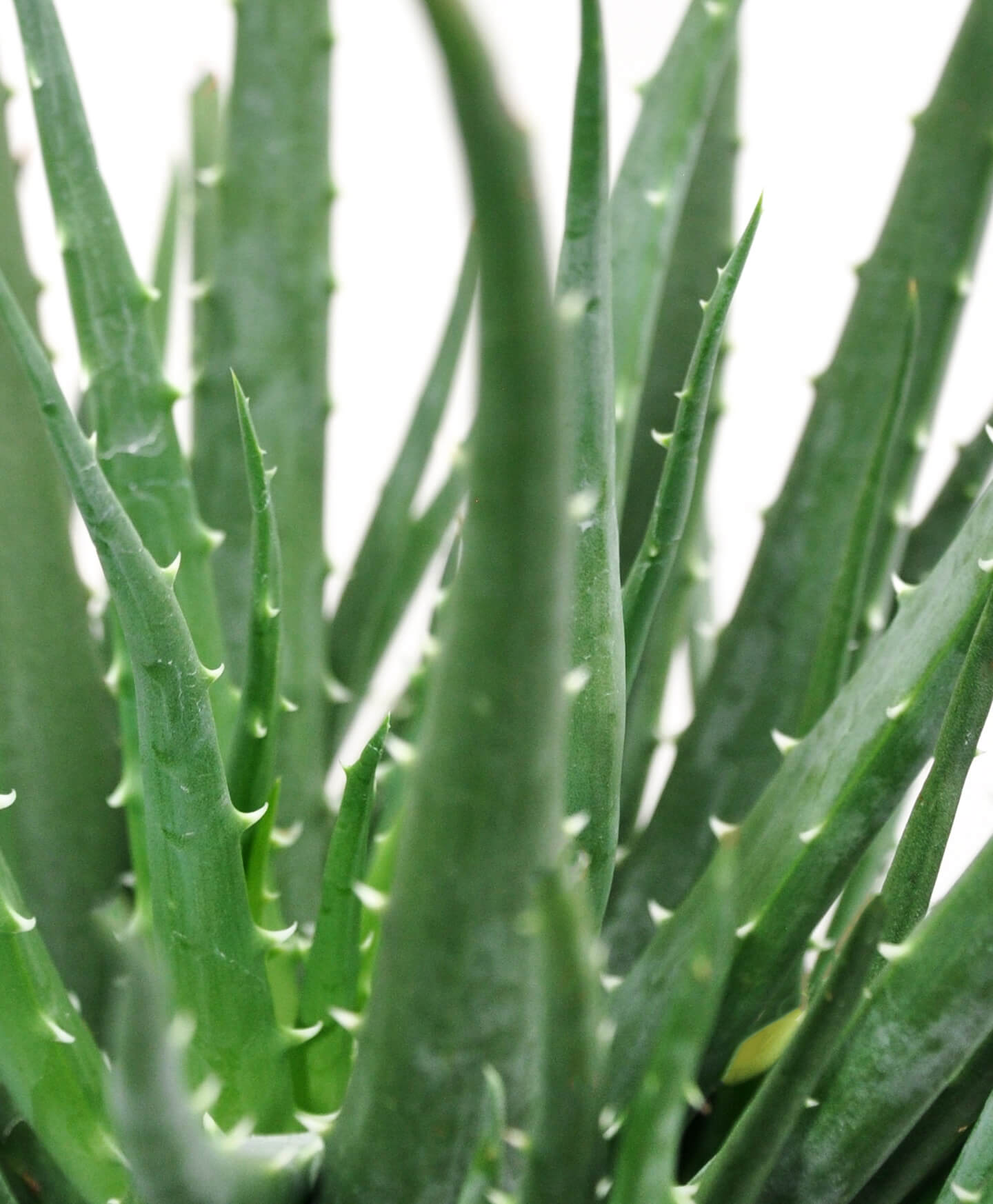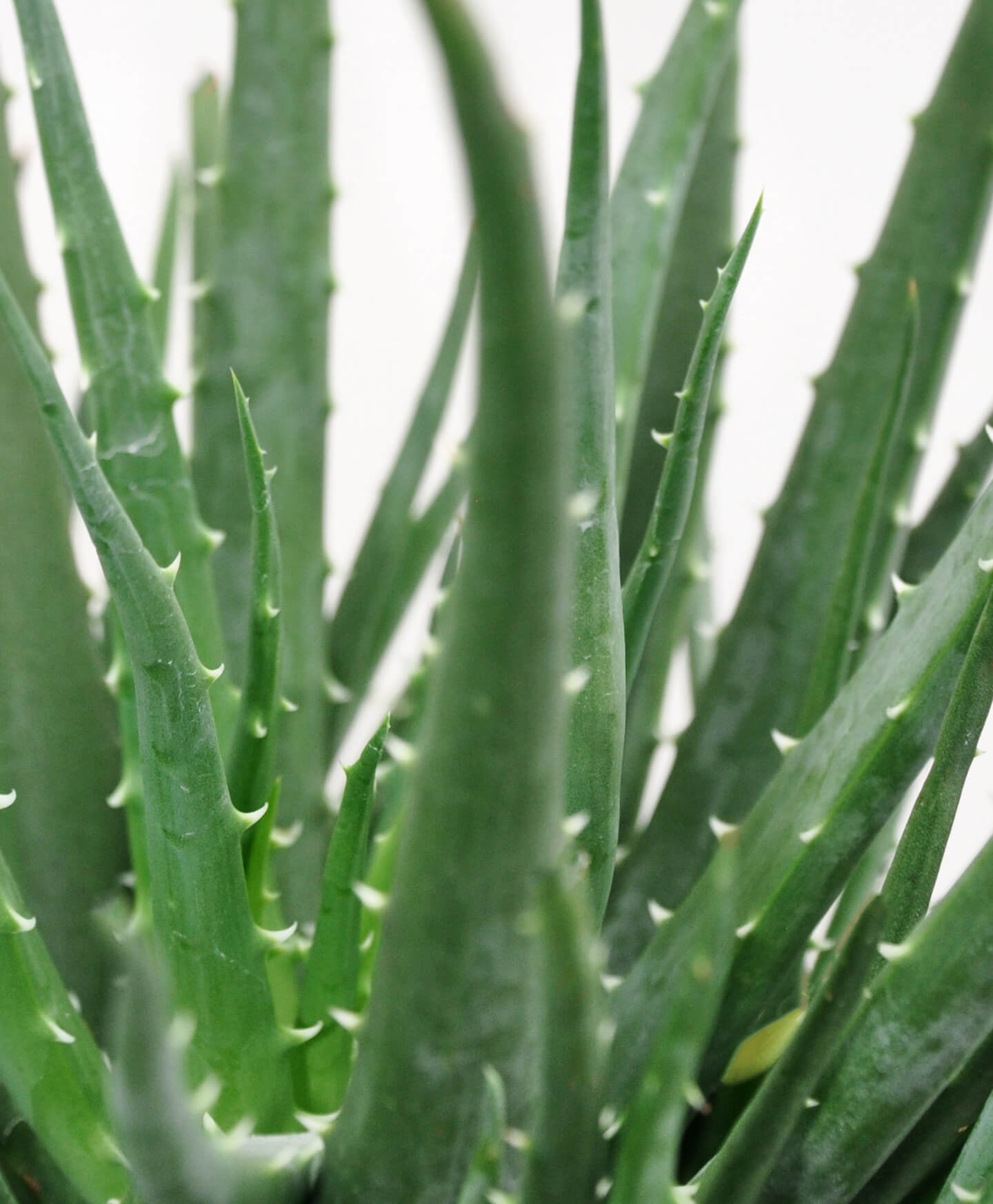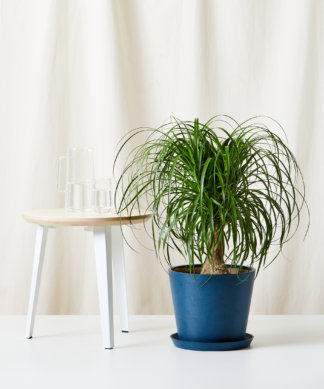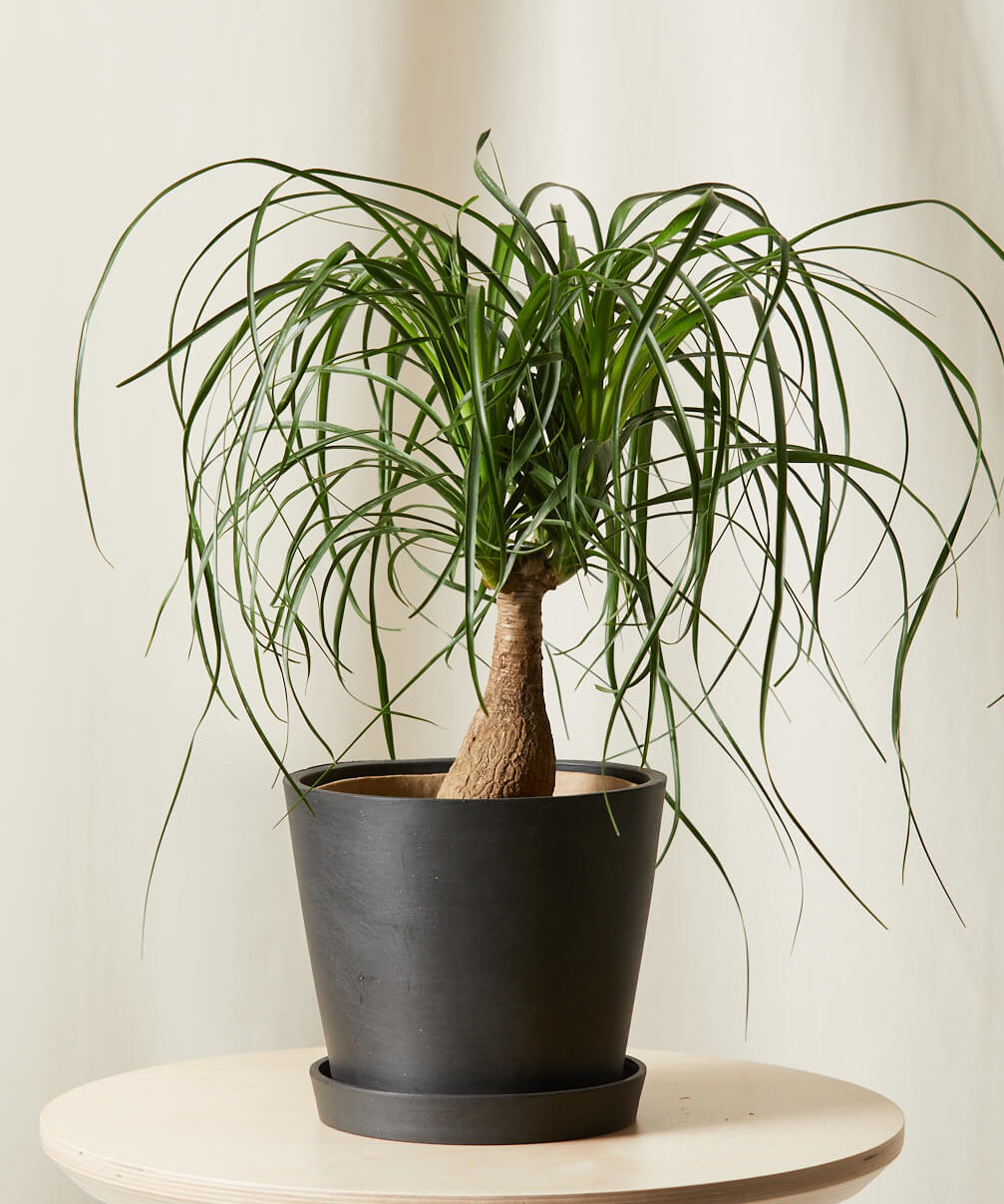How to care for your Aloe
Use these instructions to care for an Aloe. This guide will tell you how to water an Aloe; its light, temperature, humidity preferences and any additional care it might need to help it grow.
Aloe Blush
Your Aloe plant prefers bright indirect light to full sun. Insufficient light will cause the leaves to droop downwards. If you don’t have a location with ideal lighting for your plant, use a Grow Light!
Water your Aloe when the soil volume is 100% dry. Water thoroughly until it flows out of the drainage hole. Discard excess water to discourage root rot.
This plant does not require any extra humidity and can handle dry air.
Your Aloe will appreciate temperatures between 65-75°F.
Feed once in the spring and once in the summer with a liquid fertilizer for cacti and succulents.
This plant is toxic to pets and humans if ingested.
If you place your plant in the full sun during the late spring and summer, it will most likely reward you with soft-orange blooms. When placed outdoors, it will require a bit more water. Look out for wilting leaves—this is a result of inadequate water.
Aloe Jucunda
Your Aloe plant prefers bright indirect light to full sun. Insufficient light will cause the leaves to droop downwards. If you don’t have a location with ideal lighting for your plant, use a Grow Light!
Water your Aloe when the soil volume is 100% dry. Water thoroughly until it flows out of the drainage hole. Discard excess water to discourage root rot.
This plant does not require any extra humidity and can handle dry air.
Your Aloe will appreciate temperatures between 65-75°F.
Feed once in the spring and once in the summer with a liquid fertilizer for cacti and succulents.
This plant is toxic to pets and humans if ingested.
If you place your plant in the full sun during the late spring and summer, it will most likely reward you with pink blooms. When placed outdoors, it will require a bit more water. Look out for wilting leaves—this is a result of inadequate water. Your Aloe plant is sensitive to overwatering. Soft, mushy, or brown leaves indicate your plant may be suffering from root rot.
Aloe Pepe
Your Aloe plant prefers bright indirect light to full sun. Insufficient light will cause the leaves to droop downwards. If you don’t have a location with ideal lighting for your plant, use a Grow Light!
Water your Aloe when the soil volume is 100% dry. Water thoroughly until it flows out of the drainage hole. Discard excess water to discourage root rot.
This plant does not require any extra humidity and can handle dry air.
Your Aloe will appreciate temperatures between 65-75°F.
Feed once in the spring and once in the summer with a liquid fertilizer for cacti and succulents.
This plant is toxic to pets and humans if ingested.
If you place your plant in the full sun during the late spring and summer, it will most likely reward you with pink blooms. When placed outdoors, it will require a bit more water. Look out for wilting leaves—this is a result of inadequate water. Your Aloe plant is sensitive to overwatering. Soft, mushy, or brown leaves indicate your plant may be suffering from root rot.
Aloe Sunset
Your Aloe plant prefers bright indirect light to full sun. Insufficient light will cause the leaves to droop downwards. If you don’t have a location with ideal lighting for your plant, use a Grow Light!
Water your Aloe when the soil volume is 100% dry. Water thoroughly until it flows out of the drainage hole. Discard excess water to discourage root rot.
This plant does not require any extra humidity and can handle dry air.
Your Aloe will appreciate temperatures between 65-75°F.
Feed once in the spring and once in the summer with a liquid fertilizer for cacti and succulents.
This plant is toxic to pets and humans if ingested.
If you place your plant in the full sun during the late spring and summer, it will most likely reward you with soft-orange blooms. When placed outdoors, it will require a bit more water. Look out for wilting leaves—this is a result of inadequate water.
Aloe Vera
Your Aloe plant prefers bright indirect light to full sun. Insufficient light will cause the leaves to droop downwards. If you don’t have a location with ideal lighting for your plant, use a Grow Light!
Water your Aloe Vera when the soil volume is 100% dry. Water thoroughly until it flows out of the drainage hole. Discard excess water to discourage root rot.
This plant does not require any extra humidity and can handle dry air.
Your Aloe will appreciate temperatures between 65-75°F.
The Aloe Vera does not need to be fertilized. However, if you wish to add some use a cactus or succulent liquid houseplant food only once a year in the spring.
This plant is toxic to pets and humans if ingested.
The Aloe Vera can also provide your family with a plant that can help treat minor burns and rashes. While the gel found in the leaves of an Aloe Vera is safe for your child’s skin, the “latex” (a thin layer of yellow juice found just below the outer skin of the aloe vera plant’s leaves) can cause indigestion and irritation if ingested.
Aloe White Fox
Your Aloe plant prefers bright indirect light to full sun. Insufficient light will cause the leaves to droop downwards. If you don’t have a location with ideal lighting for your plant, use a Grow Light!
Water your Aloe when the soil volume is 100% dry. Water thoroughly until it flows out of the drainage hole. Discard excess water to discourage root rot.
This plant does not require any extra humidity and can handle dry air.
Your Aloe will appreciate temperatures between 65-75°F.
Feed once in the spring and once in the summer with a liquid fertilizer for cacti and succulents.
This plant is toxic to pets and humans if ingested.
Your Aloe plant is sensitive to overwatering. Soft, mushy, or brown leaves indicate your plant may be suffering from root rot.
Hedgehog Aloe
Your Aloe plant prefers bright indirect light to full sun. Insufficient light will cause the leaves to droop downwards. If you don’t have a location with ideal lighting for your plant, use a Grow Light!
Water your Hedgehog Aloe when the soil volume is 100% dry. Water thoroughly until it flows out of the drainage hole. Discard excess water to discourage root rot.
This plant does not require any extra humidity and can handle dry air.
Your Aloe will appreciate temperatures between 65-75°F.
The Aloe Vera does not need to be fertilized. However, if you wish to add some use a cactus or succulent liquid houseplant food only once a year in the spring.
This plant is toxic to pets and humans if ingested.
Your Aloe plant is sensitive to overwatering. Soft, mushy, or brown leaves indicate your plant may be suffering from root rot.
Lace Aloe
Your Lace Aloe needs bright direct light. This means a spot that gets 6 plus hours of direct sun per day. If you don’t have a location with ideal lighting for your plant, use a Grow Light!
Water your Lace Aloe when the soil volume is 100% dry. Water thoroughly until it flows out of the drainage hole. Discard excess water to discourage root rot.
This plant does not require any extra humidity and can handle dry air.
Your Aloe will appreciate temperatures between 60-90°F.
Fertilize once per season with a cactus or succulent fertilizer.
This plant is toxic to humans and pets if ingested.
If physically damaged this plant will ooze a white milky sap. This is normal but can cause skin irritations if it makes skin contact. Be sure to wear gloves when handling.






